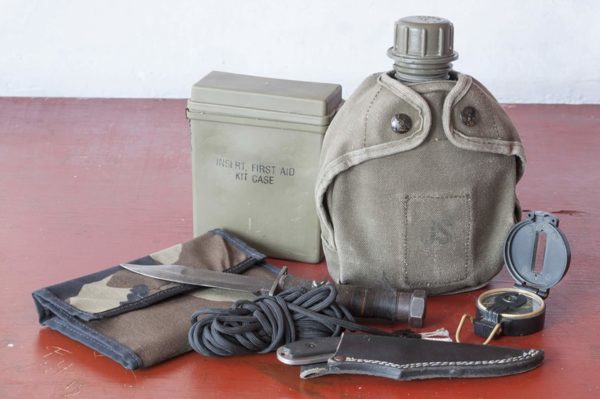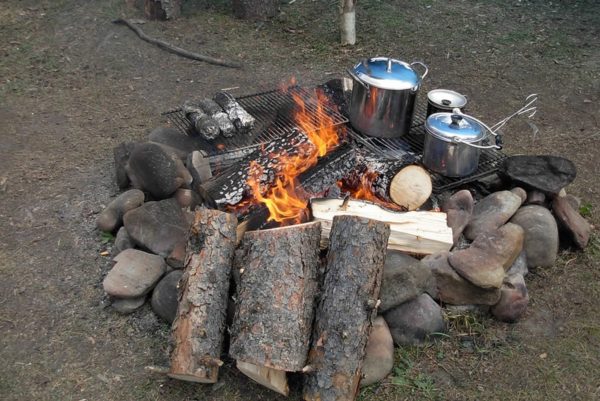Addressing Your Personal Needs When You Pack a Bug Out Bag:

When you begin to pack a bug out bag, you need to consider some personal needs, medicine for example, may be critical. Other items, such as a Bible, speak to different needs in a survival situation. The point is not everything you put into your bugout bag is generic survival gear. Some of the gear should relate to your personal needs. This includes your morale, which ultimately can also be part of survival.
There are limits on how you pack a bug out bag, of course. Personal needs can’t include big or heavy items. If they do, then you need a different plan than using a bugout bag. You can’t take everything, so determining what you really need versus what you want better be rigorous.
How that plays out is likely to be somewhat different for every individual, which is the essence of what is meant by personal needs. Here’s a brief description of categories for you to consider when you pack a bug out bag. You’re probably already aware of these items, but this article may just jog your thinking about what personal items you might want to consider hen you pack a bug out bag.

Medicines: Is there a line between prescription and non-prescription drugs? Maybe. Anything prescribed by a doctor that involves keeping you alive, obviously, you need to include when you pack a bug out bag. A small bottle of aspirin (or similar analgesic), not so much – but then who’s to say that getting rid of a headache can’t help save your life?
People are very different about taking medicine and using over-the-counter products, which are fine, up to the point where they can’t fit into the bugout bag, or crowd out other items that in reality are more important for survival. Most commercial BOBs include a first-aid kit, and those usually contain aspirin or other pain relievers and maybe Kaopectate, but don’t contain decongestants, anti-allergens, or other OTC medicines that some people might consider indispensable. If you have allergies, these are items that you definitely want to pack a bug out bag.
Pack a Bug Out Bag: Small personal items: Glasses are a prime example. If they’re necessary, then at least an extra pair should be in the BOB. There are many other similar items – nail clippers, pen knives,
kerchiefs, ear plugs – different items for each person; you know what they are. Just use common sense, survival items versus things nice to have.

Pack a Bug Out Bag: Toiletries The fine points of keeping yourself clean in a survival situation may seem unnecessary, and they often are, but again many people don’t tolerate bad hygiene very well. Besides tooth care items, soaps, and brushes, toiletries also include skin lotions, sun cream, toilet paper and other items that may not be needed for survival, but they might help avoid physical pain and other distractions (diarrhea anyone?). The longer the survival situation lasts, the more important hygiene becomes, and it eventually turns into a health issue.
Pack a Bug Out Bag: Clothing Obviously sex and body type means your clothing is to some extent personalized. There may be other items of clothing, gloves for example, which are more important for some people than others. Tolerance for heat or cold varies, so some people need more (or less) items of clothing, depending on the climate. One principle should guide almost everybody when they go to pack a bug out bag– layering. Since BOBs have limited space, it doesn’t make sense to fill it with big heavy items of clothing, a parka for example. Much better to have multiple layers – undershirt, shirt, sweater, windbreaker – to accomplish the job. Layers are flexible and usually lighter.

Pack a Bug Out Bag: Small food items or food prep items Many people have a favorite candy. It won’t keep you alive, but it might make hours of trail slogging less mind-numbing or as a reward for a tough day. Then there are things such as lactose pills, which some people need more than others. Ditto for vitamins and other food supplements; they’re not exactly medicine, but may be considered necessary by some people and take up very little real estate when you pack a bug out bag.
Don’t forget spices; they’re often a personal choice, but can go a long way toward making MRE’s or other survival food a lot more palatable. Spices also don’t add much weight or space, if you pack them carefully. It’s a cliché, “An army marches on its stomach,” and so do survivalists on the go. Don’t treat those small things that make eating more enjoyable as if they’re trivial. (Of course, this varies among people. Some could care less.)
Less than healthy items: Cigars, cigarettes, pipes, liquor – be honest, in a survival situation, even unhealthy things can help morale – as long as they’re easy to transport.

Entertainment: Deck of cards, small games, small electronics – these may seem trivial in a survival bag, and they are, but the odds of boredom being part of the survival experience are pretty high. Ask any soldier who has served in an active war about that. Again, there are trade-offs when you pack a bug out bag, weight and size versus how much they help morale. People will make different choices here, but whatever.
By definition, personal needs for survival mean just that – what you need to pack a bug out bag. When you’re making your bugout bag list, along with your bugout profile, don’t ignore or forget the personal. Sometimes personal items are obviously part of survival, but other times personal items make the survival ordeal (or experience, if you’re lucky) bearable.
Tutorial Sections

Read More

Read More

Read More

Read More

Read More

Read More

Read More

Read More

Read More

Read More

Read More

Read More

Read More

Read More











